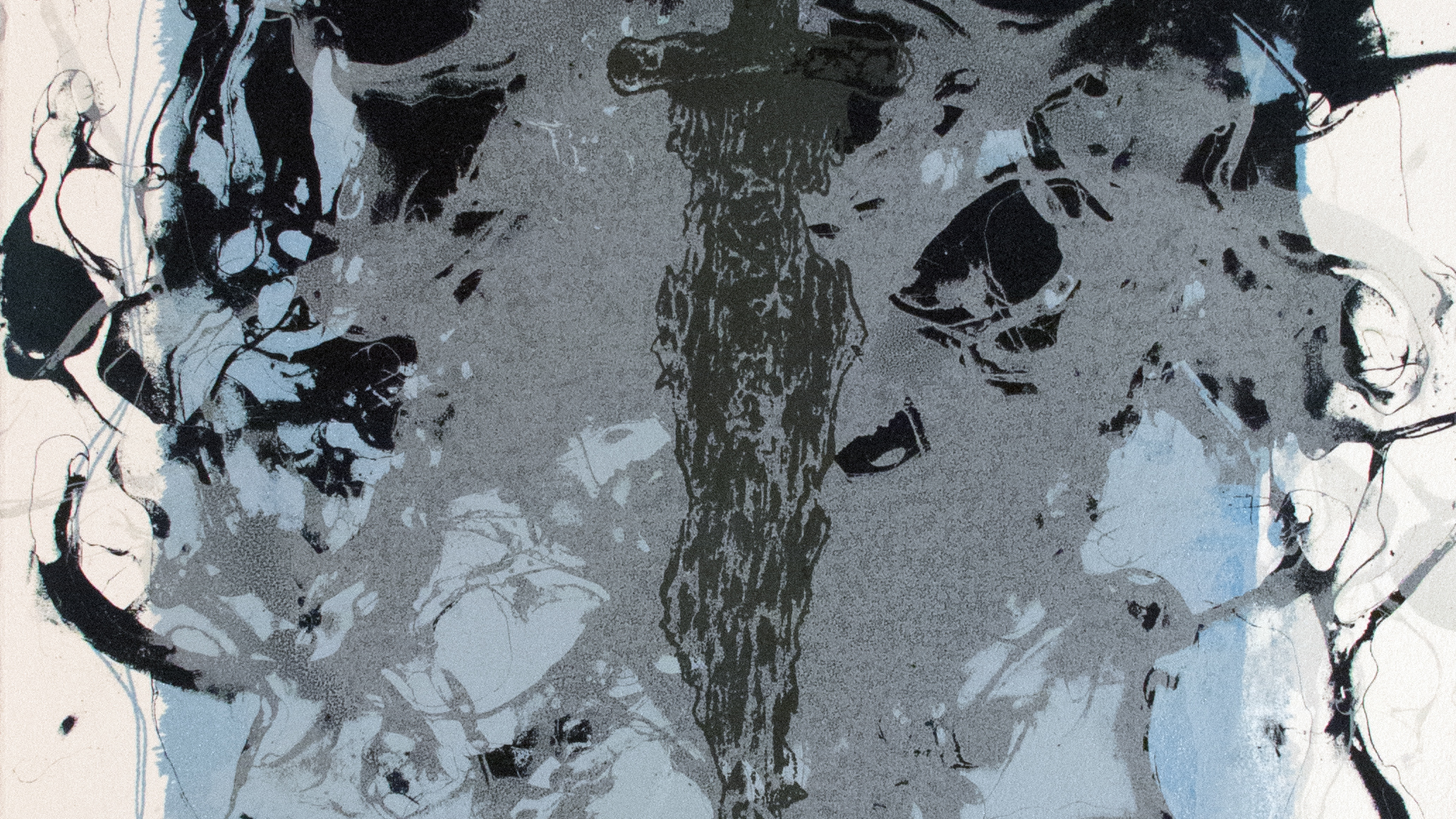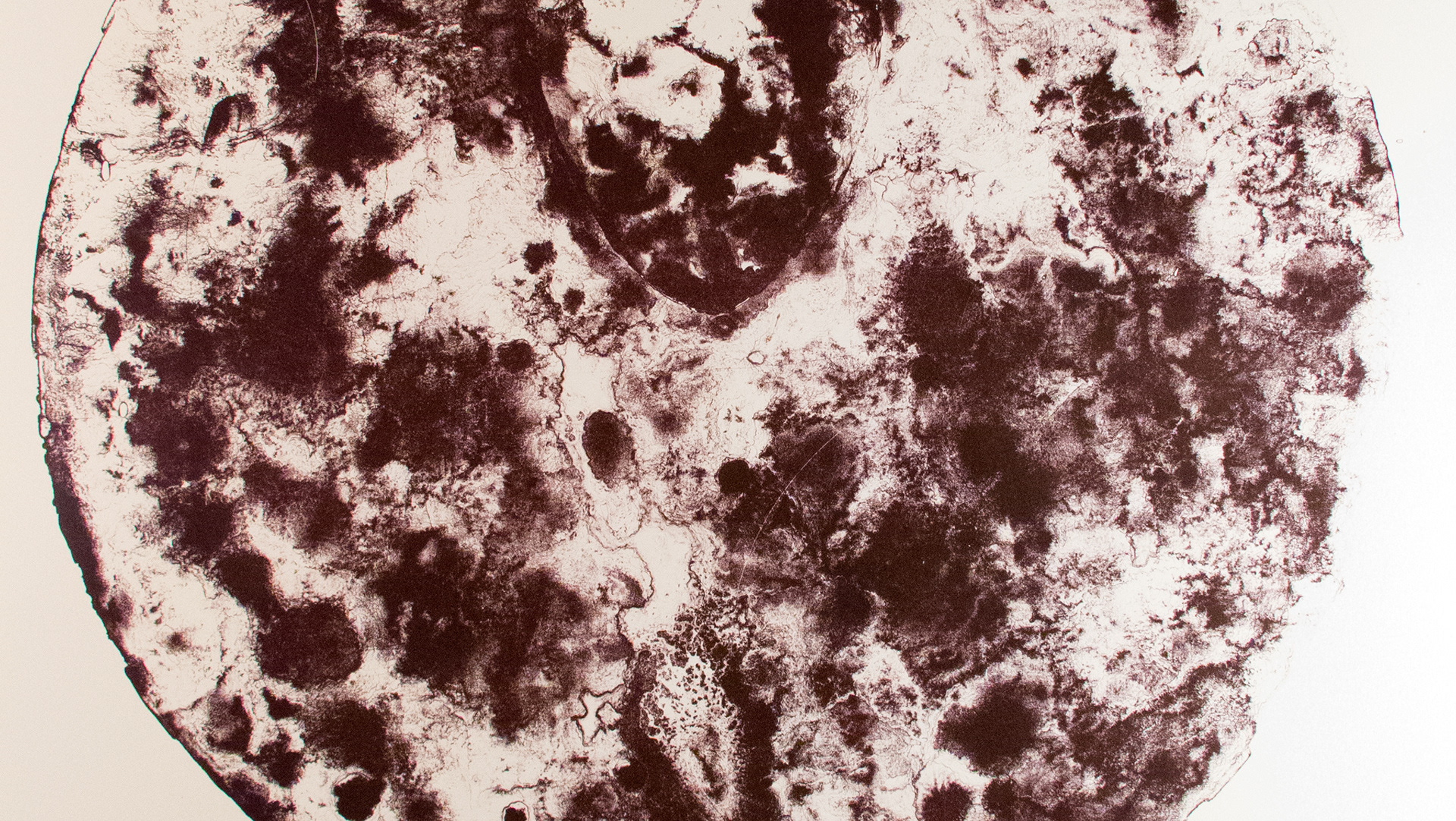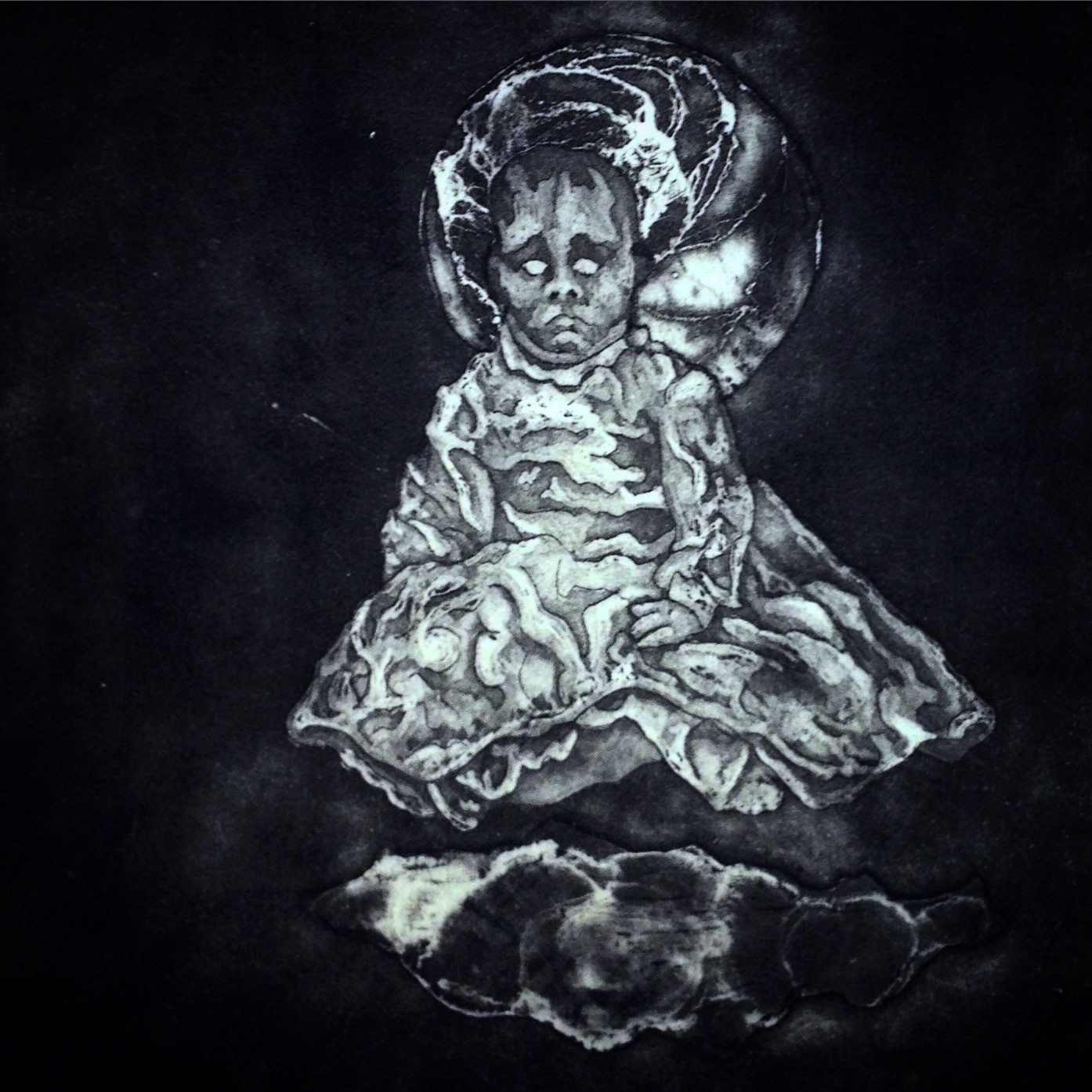
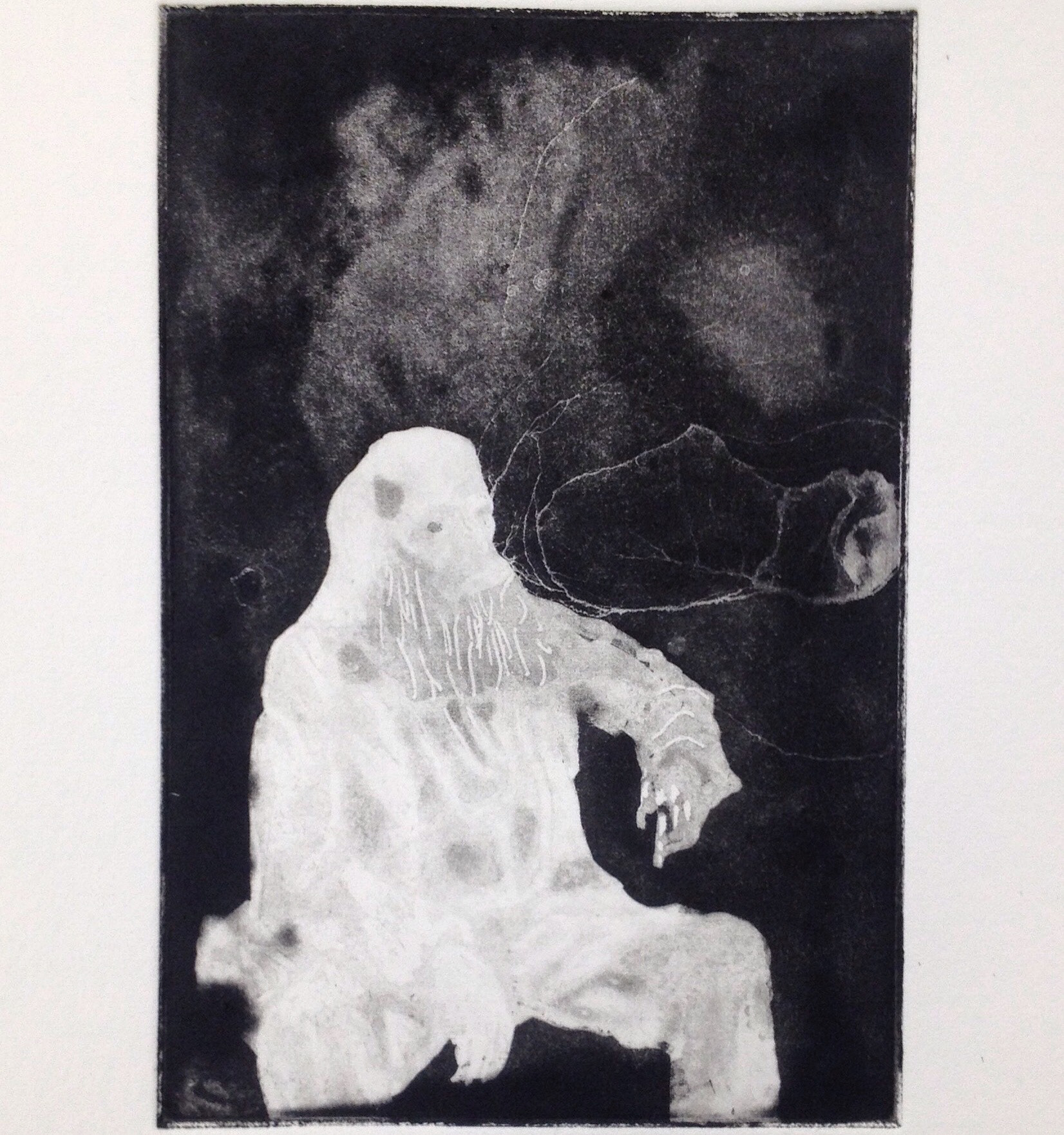
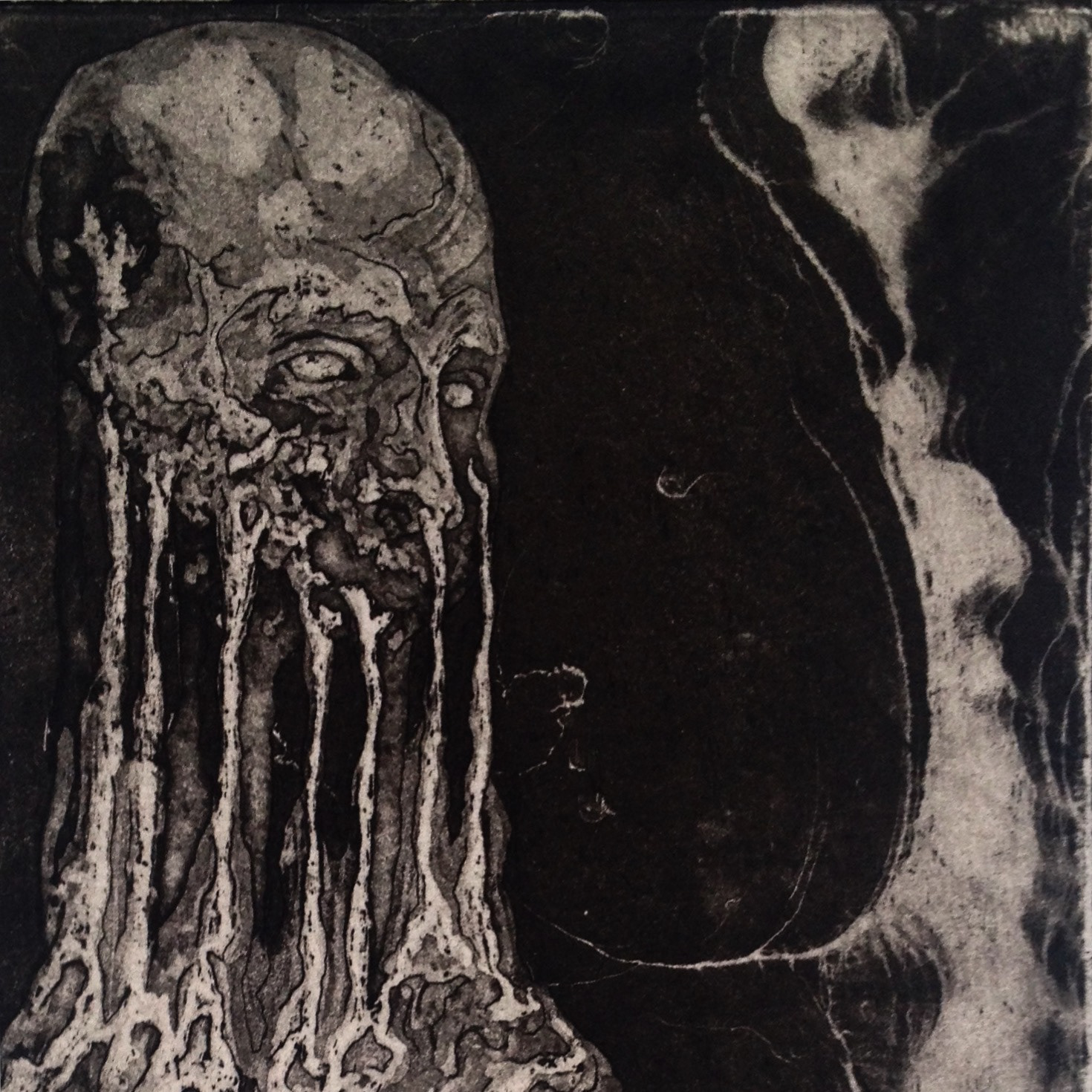
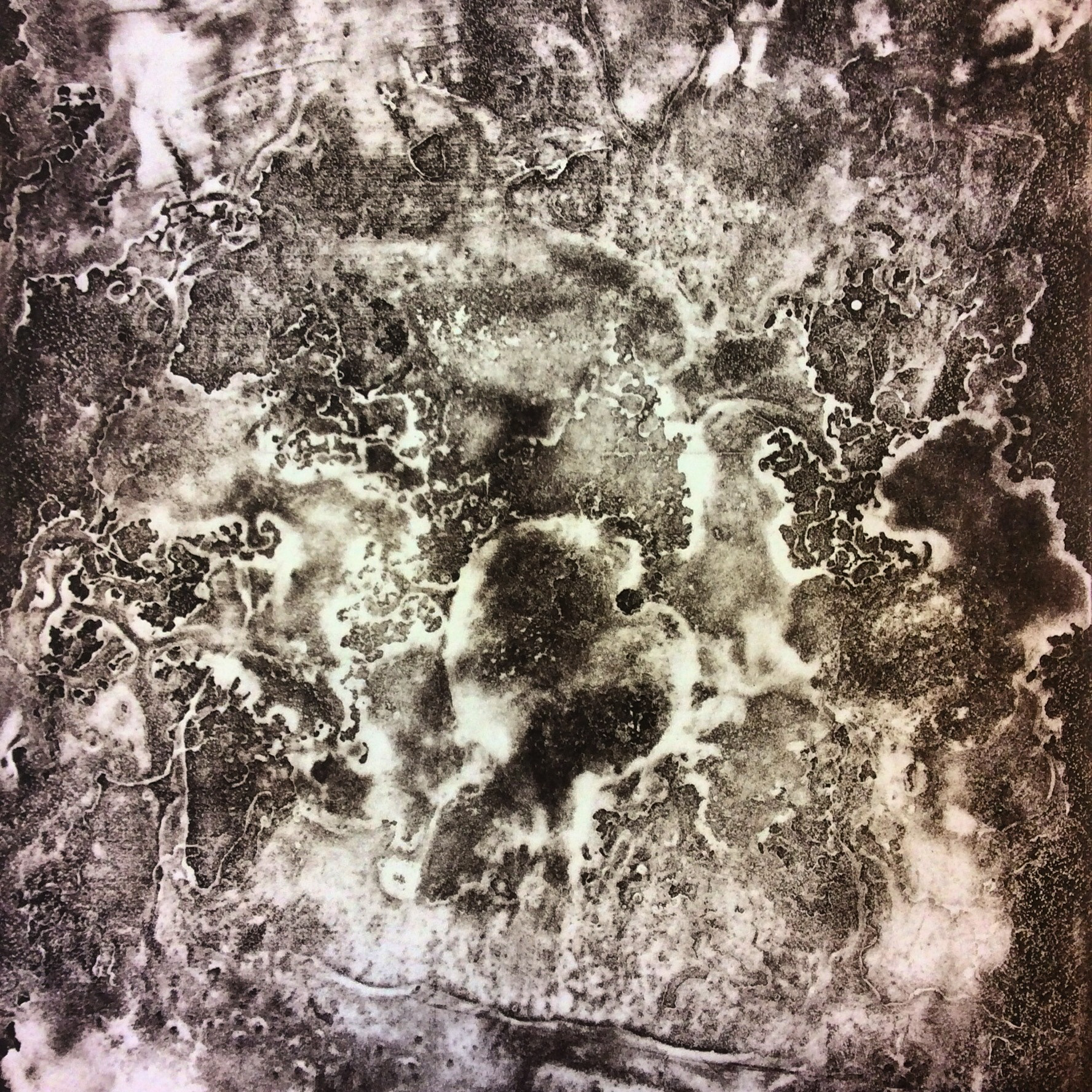
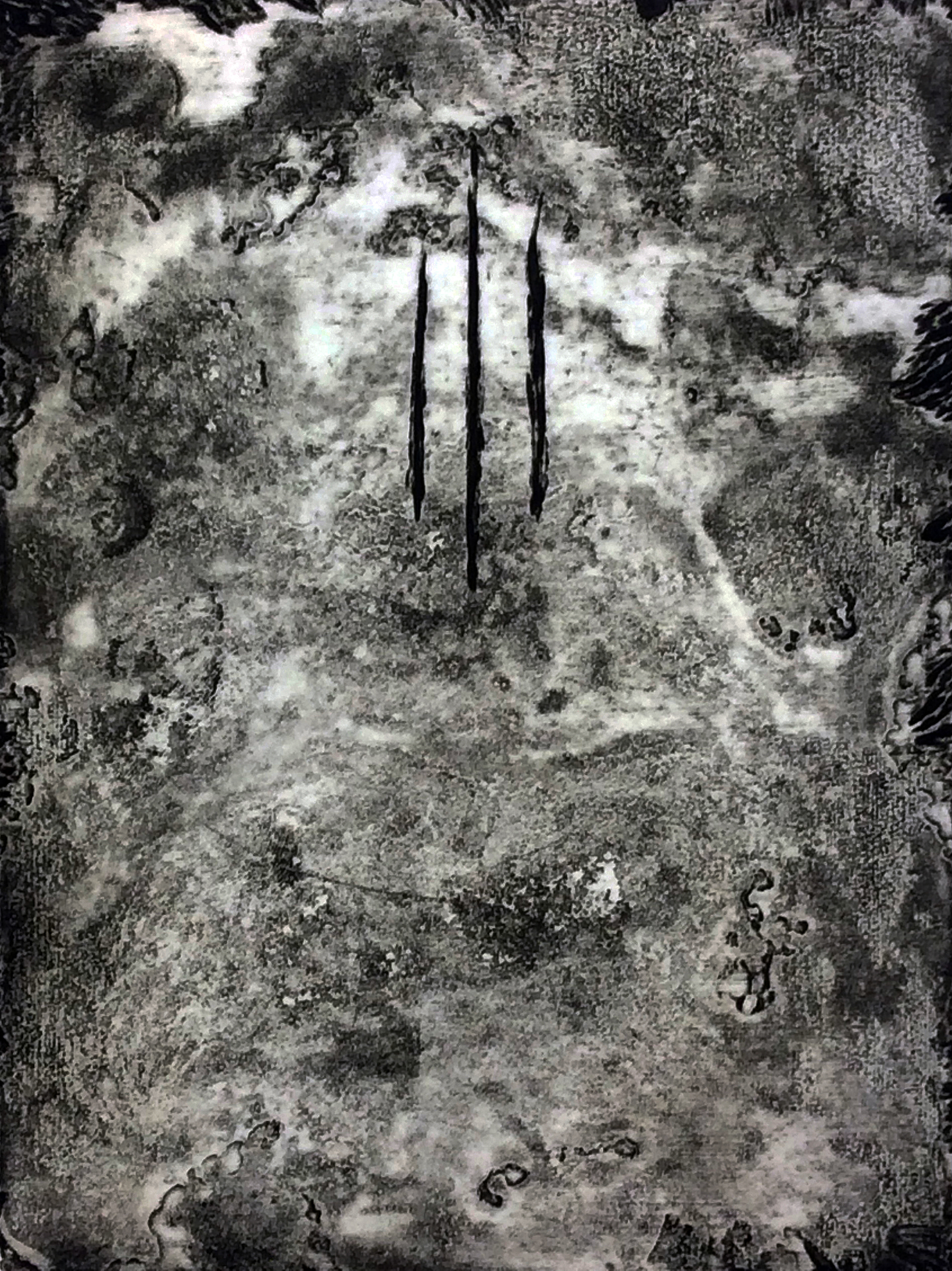
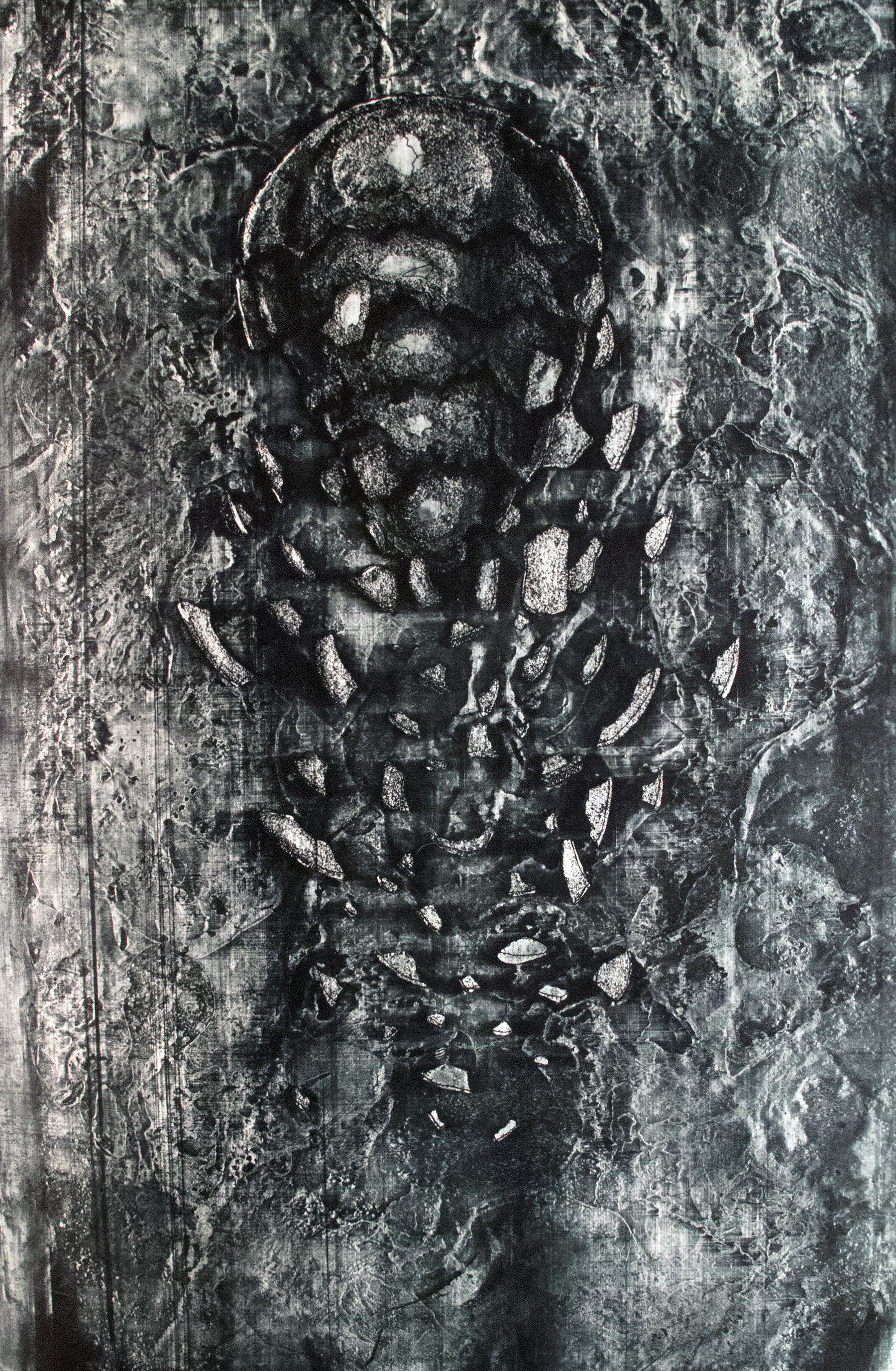
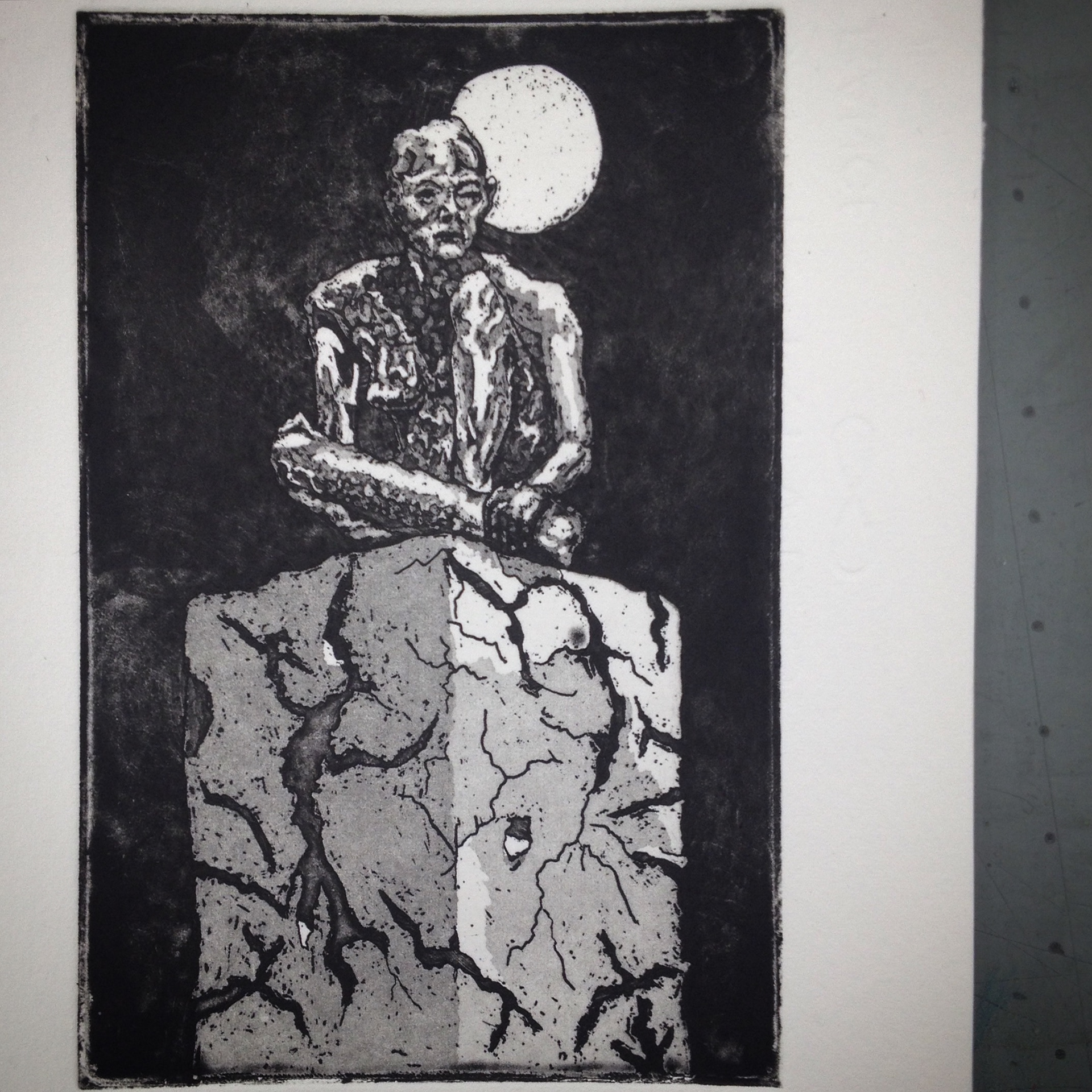
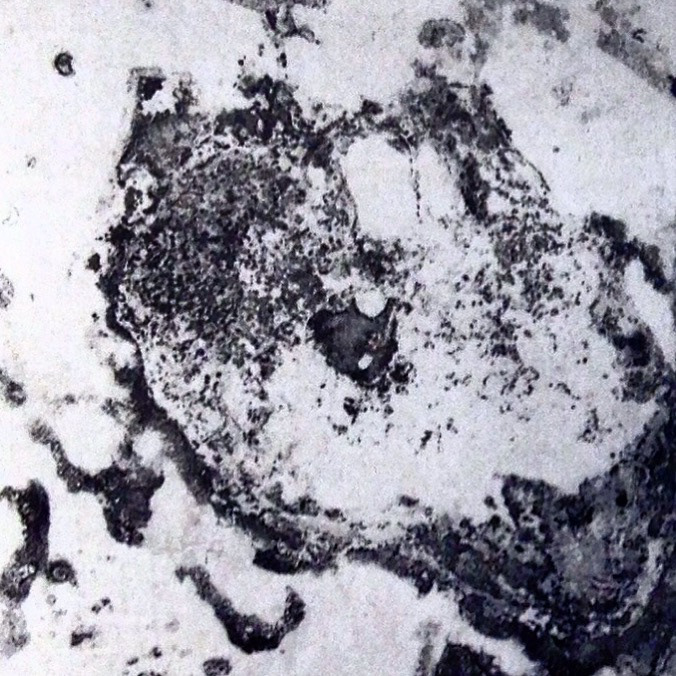
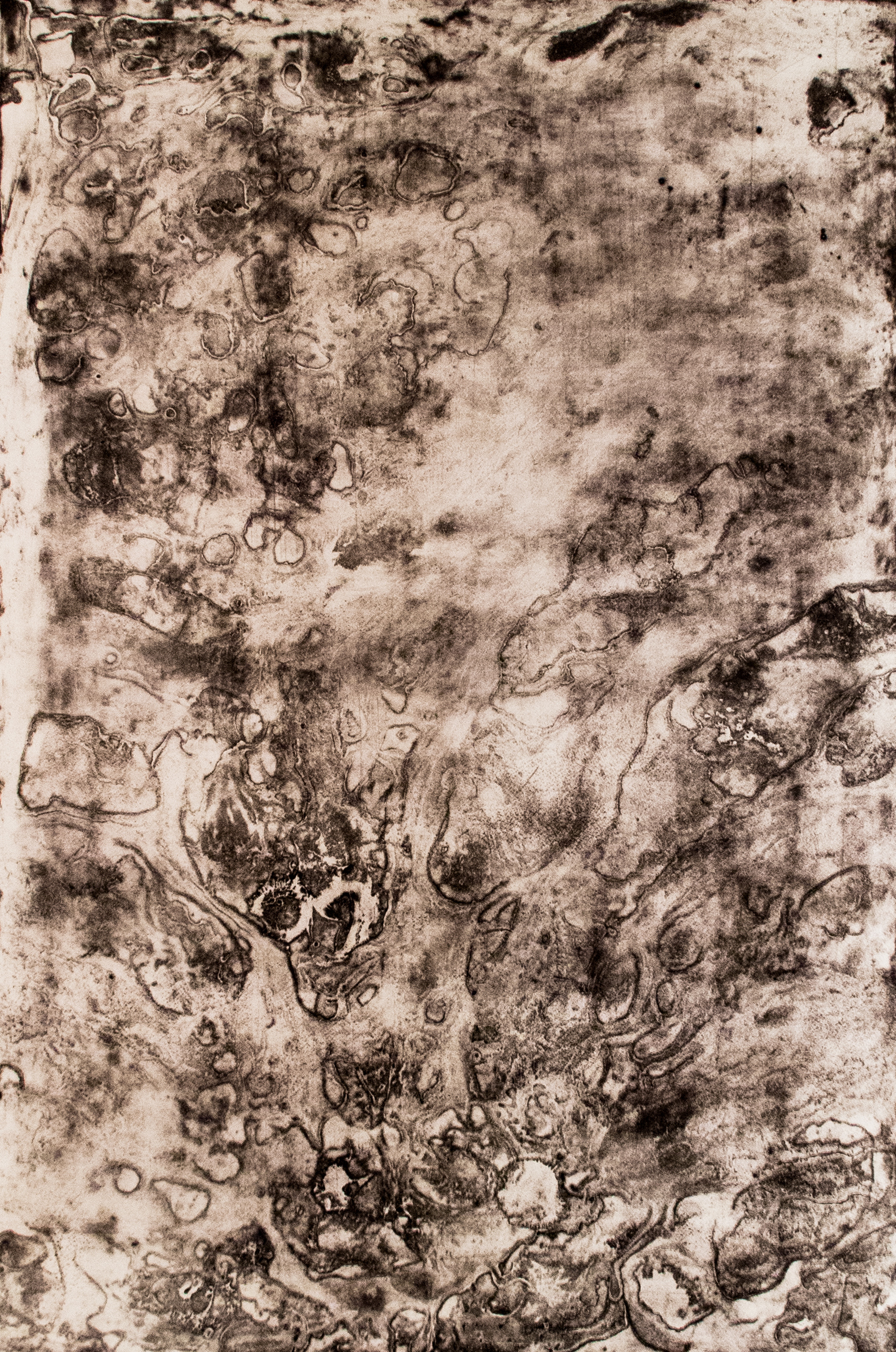
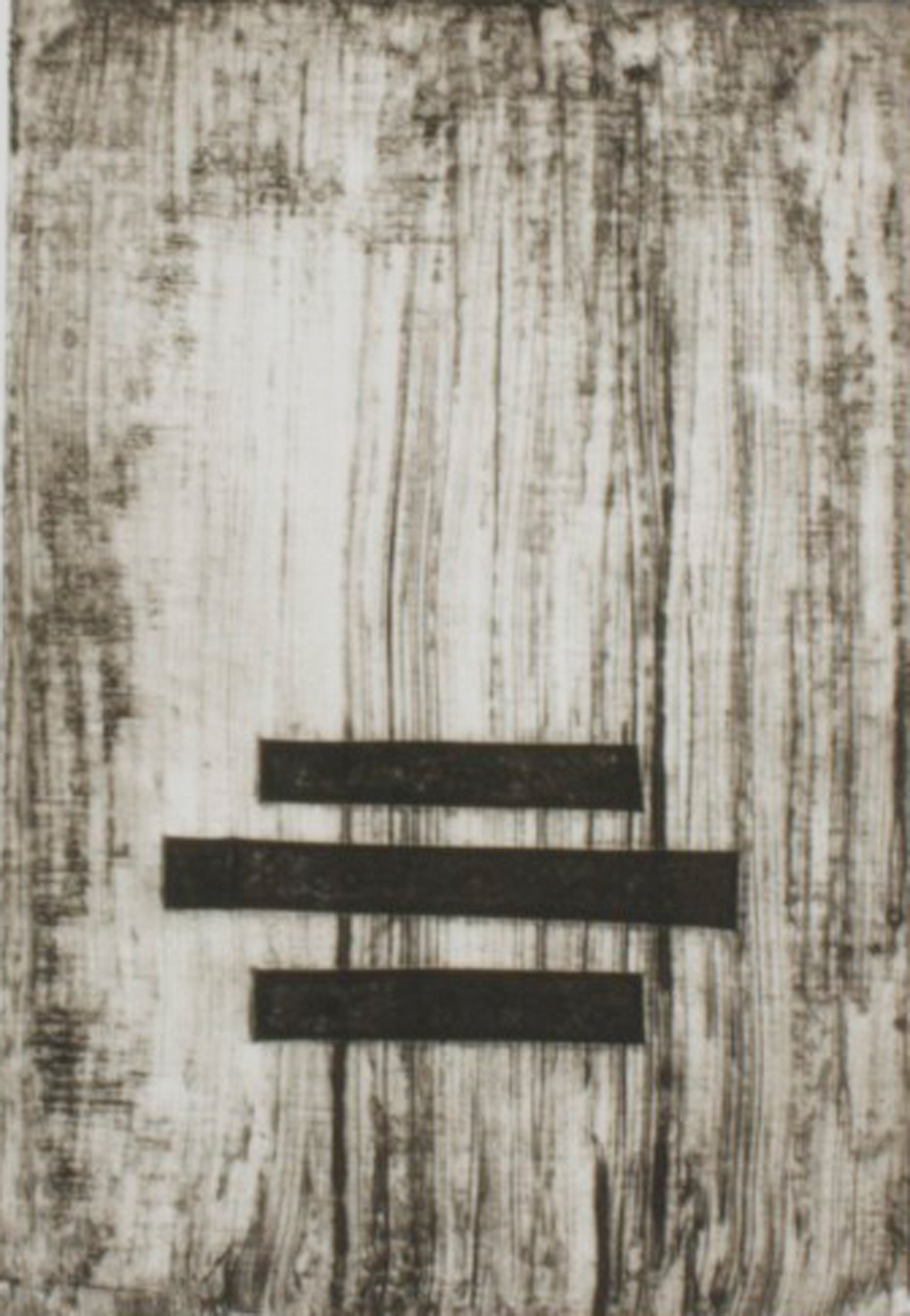
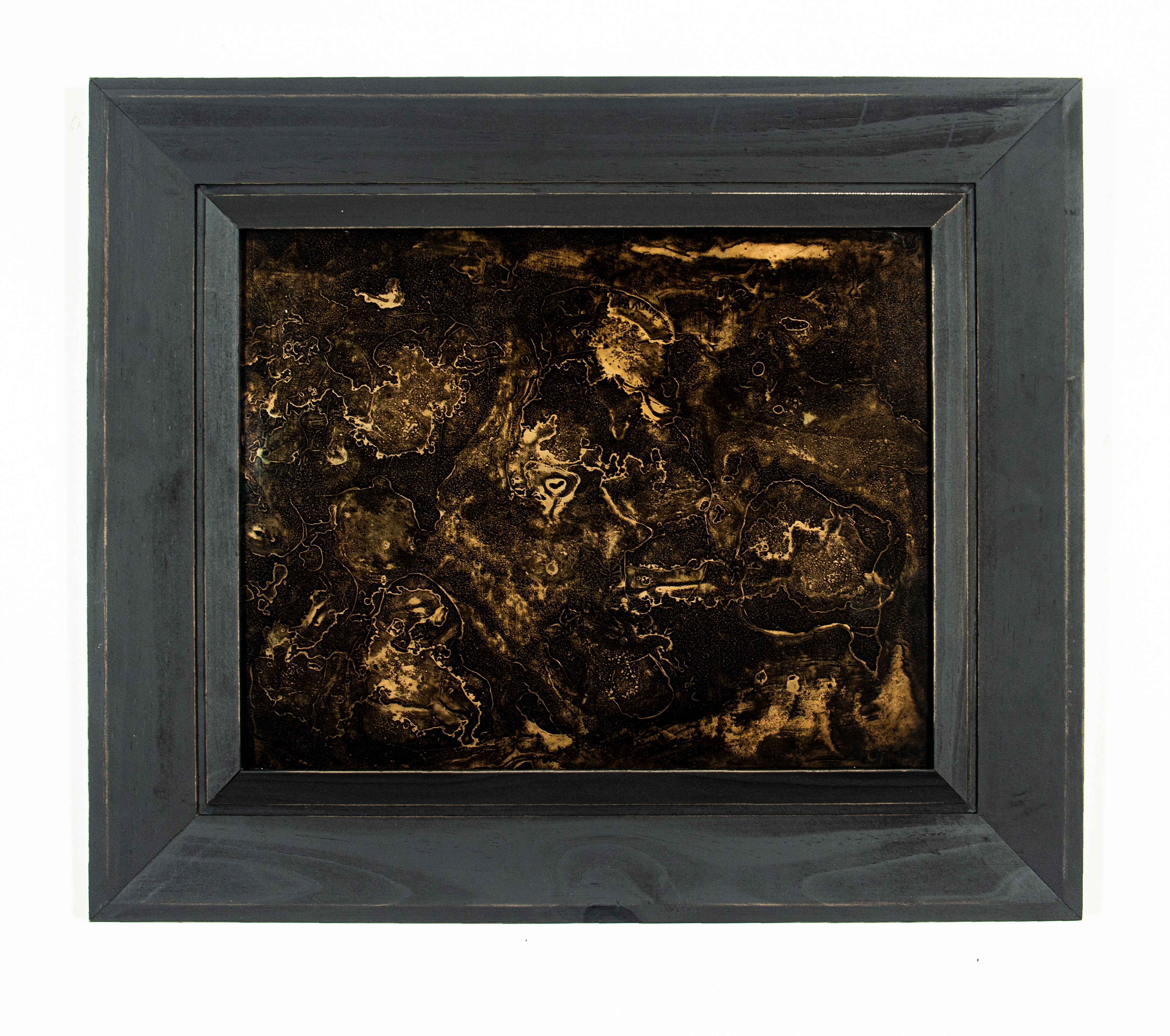
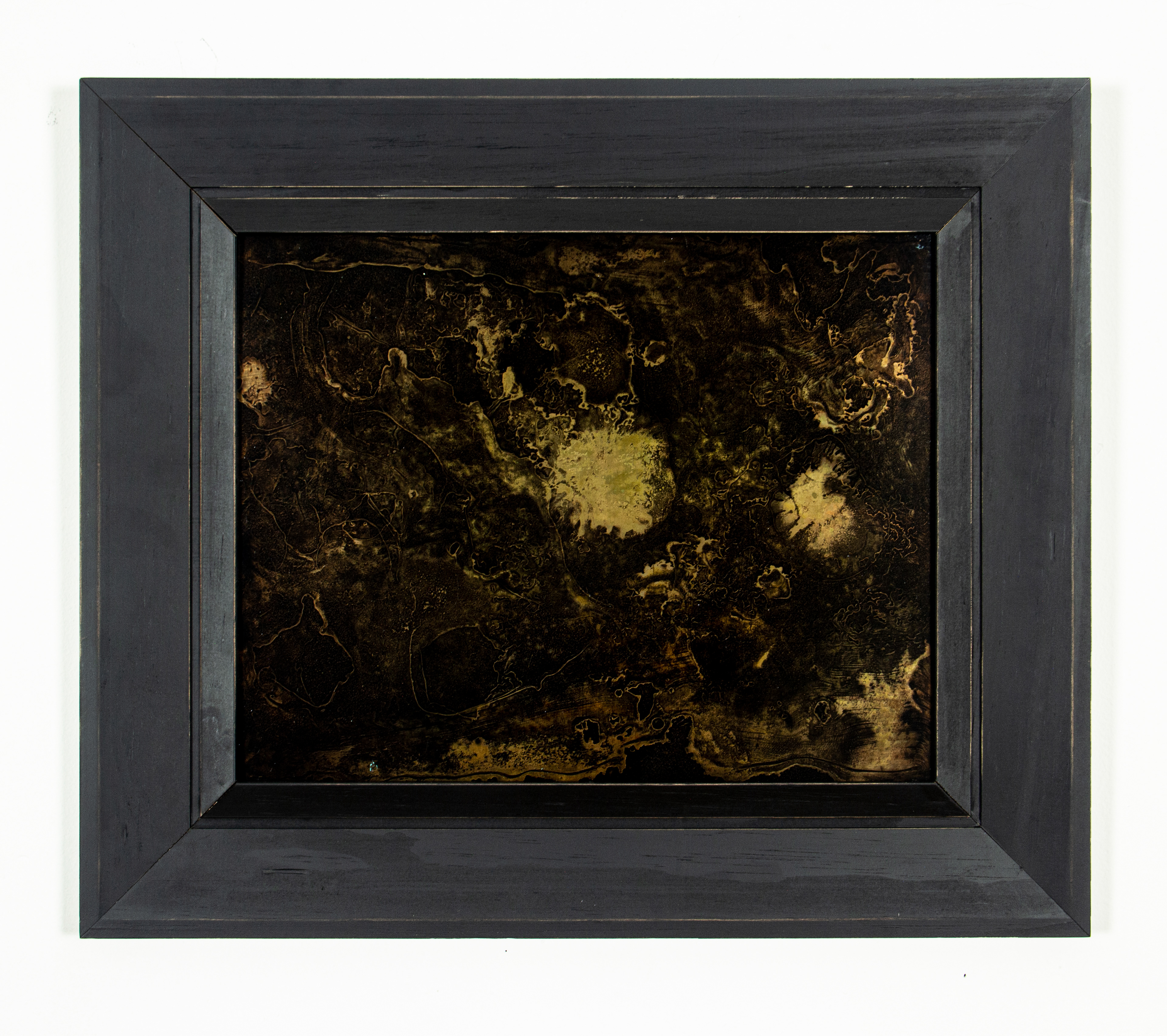
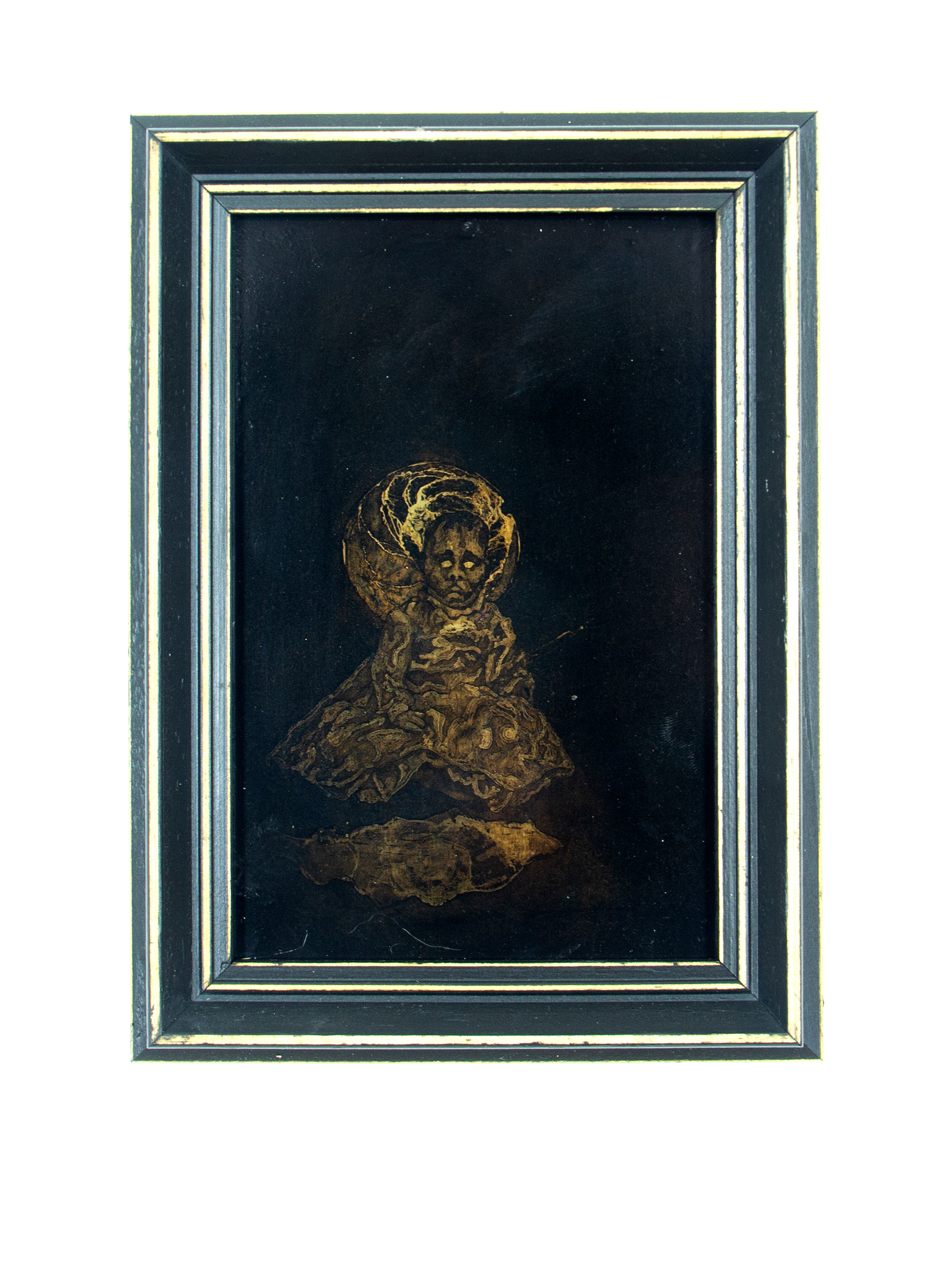
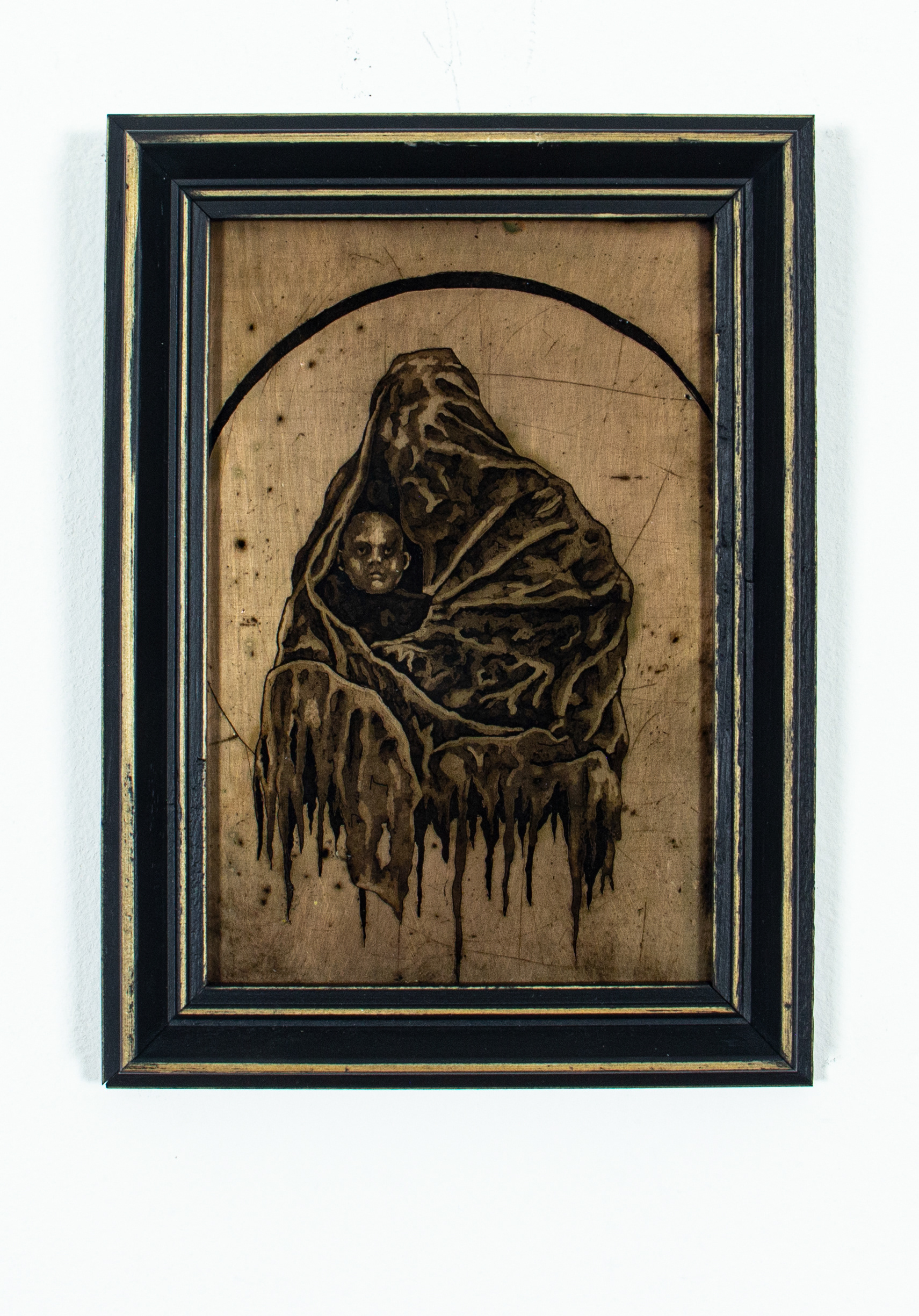
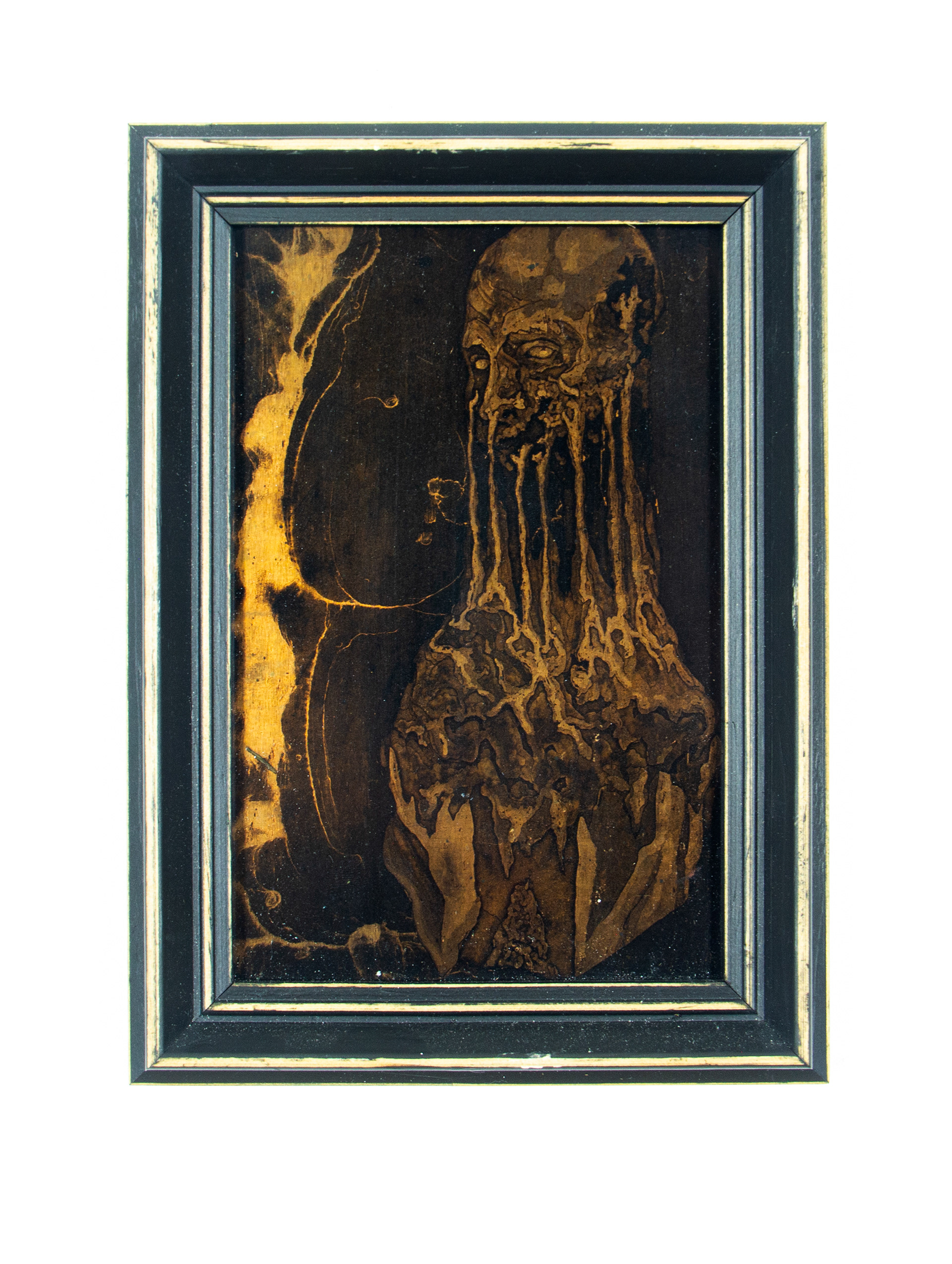
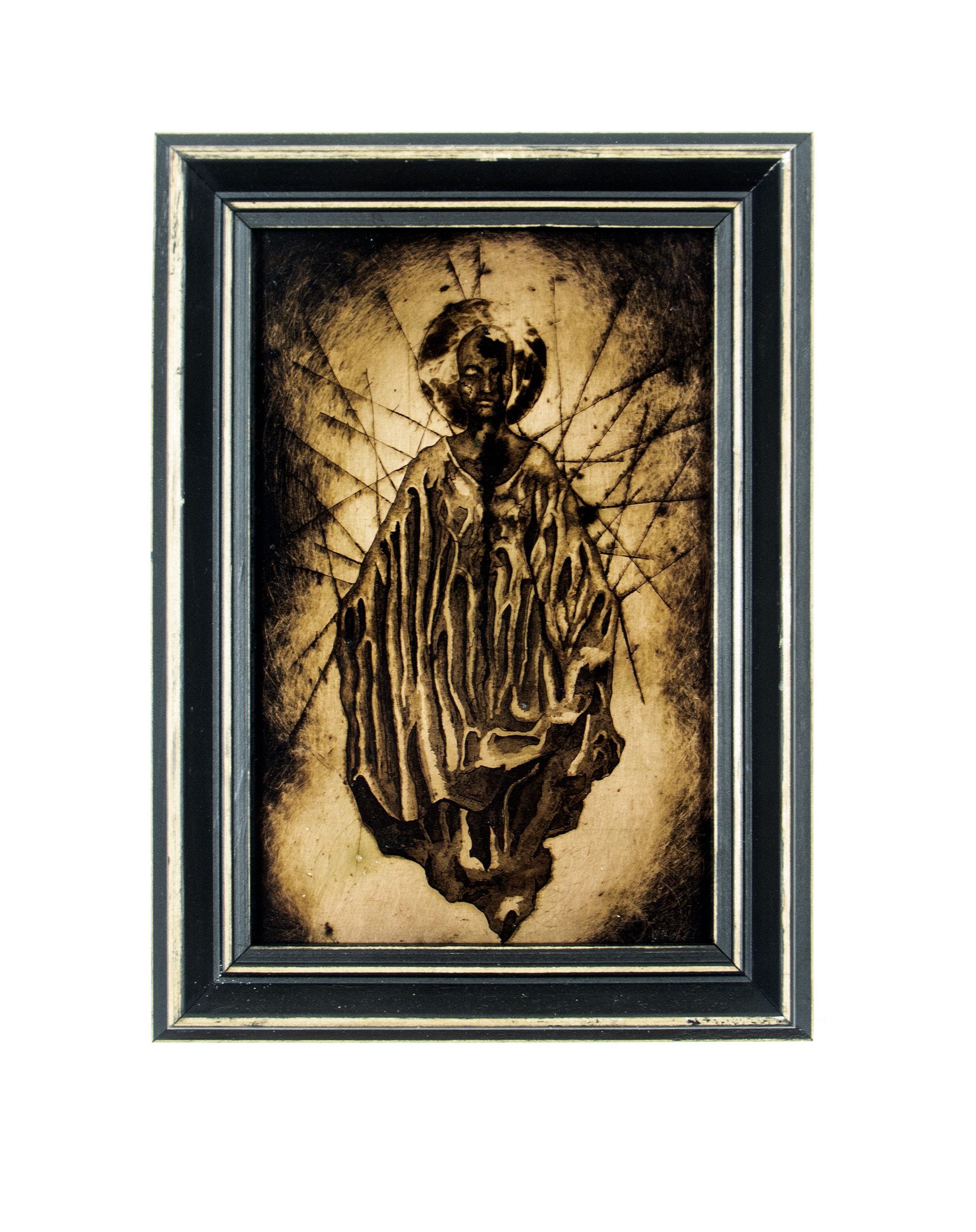
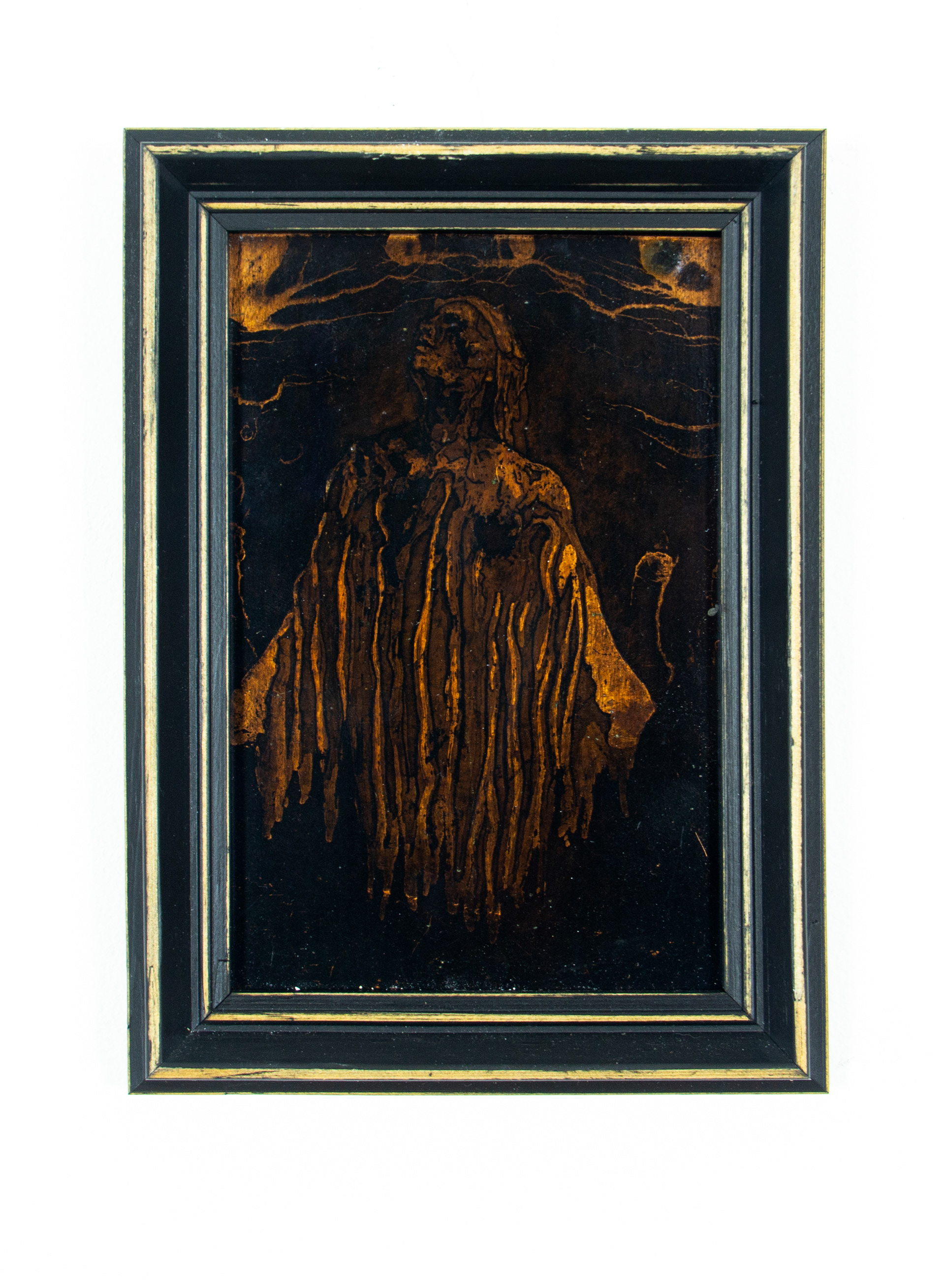
In intaglio printing, the lines to be printed are cut into a metal (e.g. copper) plate by means either of a cutting tool called a burin, held in the hand – in which case the process is called engraving; or through the corrosive action of acid – in which case the process is known as etching. In etching, for example, the plate is pre-covered in a thin, acid-resistant resin or wax ground. Using etching needles or burins, the artist or writer (etcher) engraves their image (therefore to be only where the plate beneath is exposed). The plate's ground side is then dipped into acid, or the acid poured onto it. The acid bites into the surface of the plate where it was exposed. Biting is a printmaking term to describe the acid's etching, or incising, of the image; its duration depends on the acid strength, metal's reactivity, temperature, air pressure and the depth desired. After the plate is sufficiently bitten it is removed from the acid bath, the ground is removed gently and the plate is usually dried or cleaned.
To print an intaglio plate, ink or inks are painted, wiped and/or dabbed into the recessed lines (such as with brushes/rubber gloves/rollers). The plate is then rubbed with tarlatan cloth to remove most of its waste (surface ink) and a final smooth wipe is often done with newspaper or old public phone book pages, leaving it in the incisions. Dampened paper will usually be fed against the plate, covered by a blanket, so when pressed by rolling press it is squeezed into the plate's ink-filled grooves with uniform very high pressure. The blanket is then lifted, revealing the paper and printed image. The final stages repeat for each copy needed.
